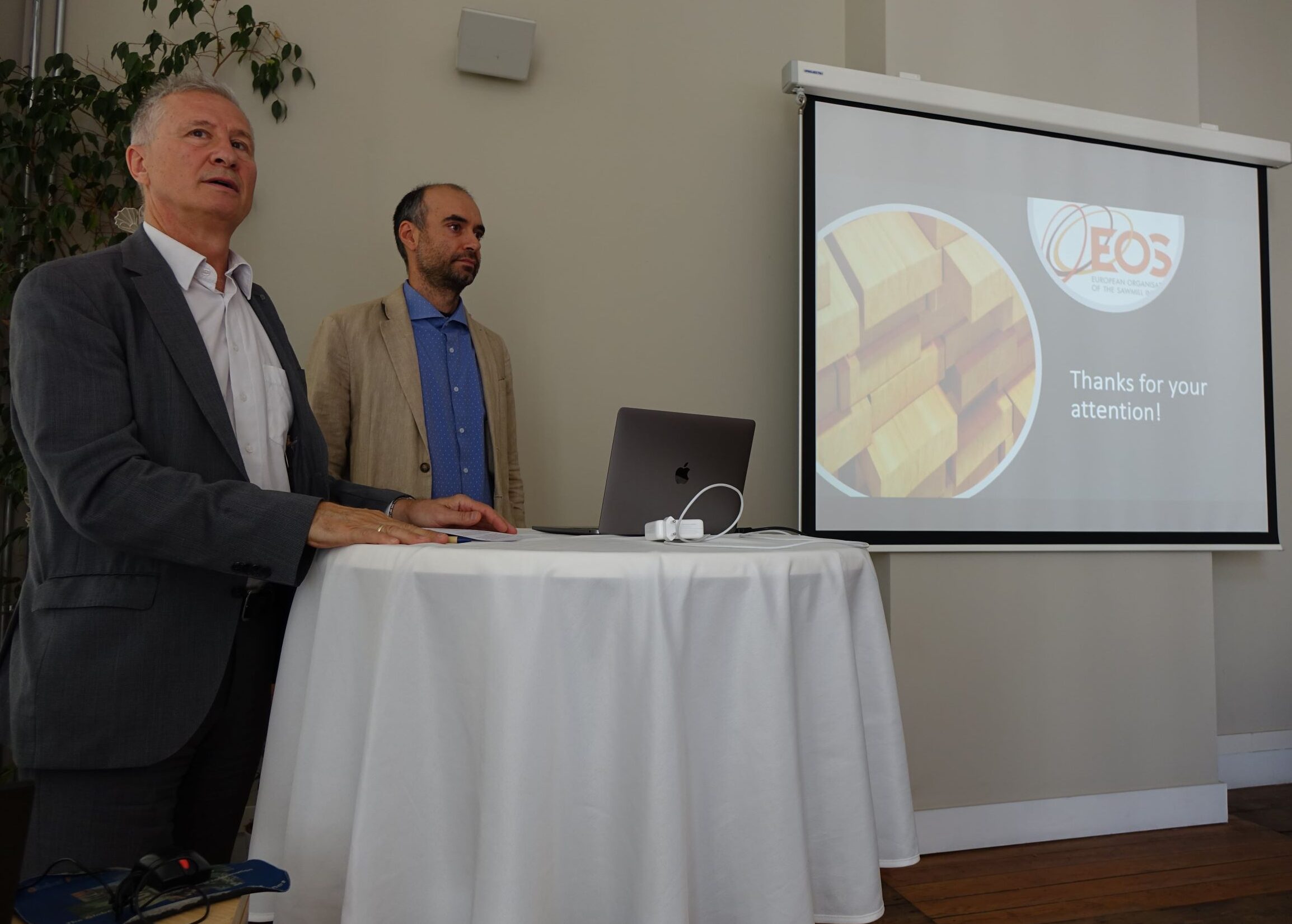EUSTAFOR co-hosts Round Table discussions on European Forest Monitoring
 On Tuesday 10 October 2023, EUSTAFOR co-hosted the Round Table discussion on “Forest-related reporting at the EU level – what we know and what’s missing?” The event was jointly co-organized with UEF (Union of European Foresters) and FECOF (European Federation of Forest-Owning Communities). Under the watch-full eye of moderator Harald Mauser from the European Forestry Institute, insightful discussions unfolded themselves.
On Tuesday 10 October 2023, EUSTAFOR co-hosted the Round Table discussion on “Forest-related reporting at the EU level – what we know and what’s missing?” The event was jointly co-organized with UEF (Union of European Foresters) and FECOF (European Federation of Forest-Owning Communities). Under the watch-full eye of moderator Harald Mauser from the European Forestry Institute, insightful discussions unfolded themselves.
The event started off with an opening statement from Thomasz Markiewicz, president of UEF, who stated that forestry, as with every aspect in life, needs objective, up-to-date data in order to make informed planning decisions. The main questions he deemed necessary to be answered, are:
1) What information is relevant?
2) Who will deliver the information?
3) How to upscale adequately?
Various speakers from different fields, among which the industries, research, forestry and forest inventory were represented, then got the opportunity to present their observations and innovations regarding forest monitoring at the EU level.
First-off was Amila Meškin from EUSTAFOR, who provided the participant of a clear overview of the EU policy process that has been leading up to the Forest Monitoring Law proposal, which will likely be presented on November 21. She also explained how several other files, like the Soil Monitoring Law, EU Deforestation Regulation and the Carbon Removals Certification, require this new Law.
The next presentation was by Bernhard Wolfslehner from Forest Europe, who’s presentation was on the requirements for data monitoring. He raised the question how monitoring could be combined with modelling, and stated the importance of monitoring the value chain as well. The main conclusions were that European forest damage reporting needs improvement, as well as reporting on the volume of marketed salvage timber and the impact of large-scale forest damages on the market dynamics.
In line with the previous presentation, Diego Benedetti from the European Organization of the Sawmill industry (EOS) then explained the impact of the forest monitoring law on the industry. He started off with explaining that the sawmill industry is facing a hard year, due to inflation, market prices and an increasing legislative burden. The EOS therefore calls for the new law to be postponed, in order to first assess the costs’ implications and find optimal synergies. Their concern is that the added burden will demotivate forest owners to harvest and increase log prices.
The fourth presentation was held by Klemens Schadauer (ENFIN), who shared his knowledge on National Forest Inventories (NFI) and the way they are conducted. The main question he raised, was whether current system is fit for the future demands of monitoring biodiversity loss and climate change effects in forests. He argues that it is all a matter of balancing the trade-offs of timelines, resolution and harmonization. ENFIN’s proposed tools for a solution are the harmonization of existing systems, the development of new indicators and to facilitate European Remote Sensing.
Johannes Breidenbach, who leads the NFI in Norway and is research professor with a focus forest monitoring with remote-sensing, showed in his presentation concern about the way in which the new legislation is being developed, in which priorities are not clearly thought-out and defined. He is working on the PathFinder project, a vision of a new European forest monitoring system. This new system aims for more integrated approach between satellite and field data, and modelling.
Joachim Maes from DG Regional and Urban Policy discussed the trends in forest conditions, which have overall increased with 2% over the period from 2000-2018, although one-third of the forest area has experienced declining conditions. He advocates for other condition indicators, like dead wood, defoliation etc. to measure forest health.
Harald Mauser from EFI had the honor to wrap up the presentation session with comment on the conservation status of habitats in the EU. In his presentation he pointed out the flaws in the classification system for the reporting under the Habitats Directive, and specifically the one-out-all-out principle. In his graphs he showed the impact that the classification approaches can have on the results. For the Austrian example, is meant that the results differed strongly based on whether they were case-based or area-based. His recommendation are to present both case- and area-based results, to approach assessment results with caution and to not transfer the results to all EU forests.
After the presentations and a short coffee break, there was room for an open discussion, led by the moderator. The main topics were:
- What are the gaps in information about forests at EU level (particular indicators, ownership, etc.) and on the potential needs?
- Acknowledging that faster reporting on forest disturbances would be beneficial: Should such reporting be prioritized at EU and Member States’ levels?
- How to upscale the data collection by different technologies to the EU level, in order to provide a solid foundation for policy makers?
- What would be the financial needs and conditions to make this potential extended monitoring work?
All presentations and the agenda are available to all participants and members of EUSTAFOR.


Published 18/10/2023, Brussels
Mr. Roberto Stelstra
Communications & Policy Officer (Forest Monitoring, Bioeconomy, Reproductive Material, CAP)
- roberto.stelstra@eustafor.eu
- +32 (0) 493 555 938
Publications
- Bernhard Wolfslehner - Forest resilience: what is needed for disturbance monitoring (.pdf)
- Diego Bendetti - EOS presentation (.pdf)
- Klemens Schadauer - Forest data availability in the member states and its current use at the EU level (.pdf)
- Amila Meškin - EU policy demands regarding forest data (.pdf)
- Johannes Breidenbach - Forest Monitoring in Europe: Exploring prospects for enhancements and future directions (.pdf)
- Harald Mauser - Comments on the Assessment of the Conservation Status of (Forest) Habitats in the EU (.pdf)
- Joachim Maes - The condition of European forests mapped by a global statistical standard (.pdf)
- Agenda Round Table event (.pdf)

